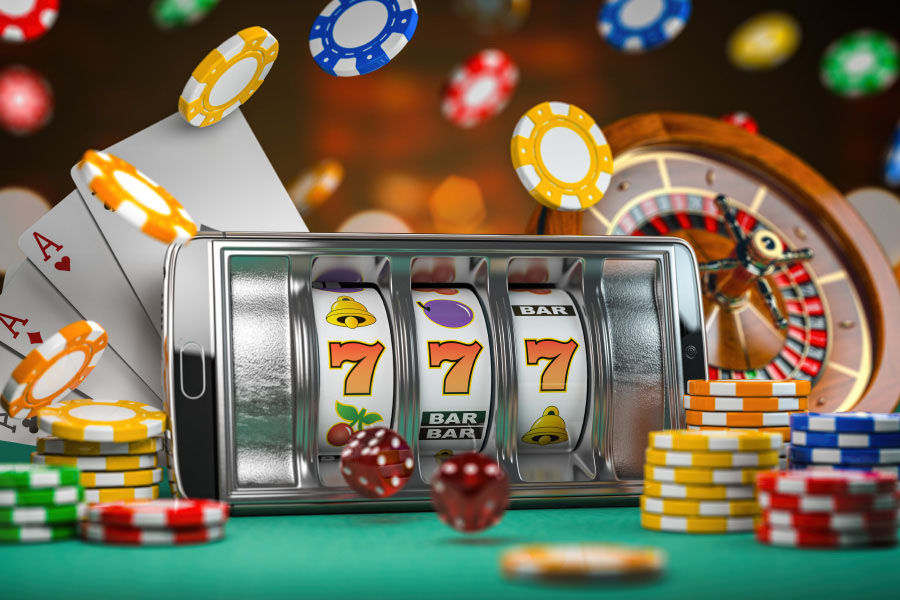
In a vibrant and stimulating world of gaming establishments, where fortune and strategy intertwine, color and aesthetic play a pivotal role in drawing in gamblers. As soon as players step inside a casino or log into a gaming website, they are immersed in a visual feast that captures their attention and lures them to discover further. Bright colors, captivating graphics, and creative layouts are carefully crafted to create an environment of thrill and expectation, ultimately enhancing the gaming encounter.
As gamblers move through the dynamic landscape of casino games, they come across a variety of designs that not only serve visual purposes but also influence emotions and decision-making. Colors like scarlet and gold symbolize wealth and luck, while soothing navy and greens can create a much tranquil environment. Understanding how these elements function together allows casinos to create an inviting and energizing atmosphere that encourages players to engage with the games, invest more time at the tables, and increase their overall enjoyment.
The Psychology of Tint in Gaming Establishments
Hue plays a crucial role in the creation of gaming experiences, affecting players’ feelings and responses. Bright and bold shades, such as scarlet and gold, are often used to ignite excitement and draw focus. These hues create a sense of pressure and vitality, encouraging gamblers to involve themselves more eagerly with the game. By strategically selecting hues, designers aim to elicit feelings of pleasure and excitement, which can enhance the overall player experience.
Different hues also have psychological connotations that can affect how participants perceive their odds of victory. For example, emerald is frequently associated with luck and prosperity, making it a frequent choice in games like roulette and poker games. This connection can cause players to feel more hopeful and confident in their play, ultimately encouraging them to wager more. Comprehending these connections allows game creators to create environments that enhance player satisfaction and retention.
In addition, the interface of gambling game interfaces often utilizes gradients and contrasting hues to instruct players’ actions. For case, winning results may be highlighted with vivid, opposing colors, creating a visual cue. This approach supports successful results and promotes repeated gameplay. By utilizing color psychology, casinos can develop activities that not only attract gamblers but also keep them engaged and dedicated in their game experience.
Creative Elements that Engage Gamers
The aesthetic appeal of gambling games is largely influenced by the implementation of vibrant colors. Lively and contrasting colors are strategically chosen to create an appealing atmosphere that captures attention. For example, crimson and golden hues often signify good fortune and wealth, which is why they are common in the color schemes of gaming machines and table surfaces. These colors not only attract players in, but they also evoke emotions related to excitement and expectation, enhancing the overall gaming experience.
In addition to color, the design and layout of gambling games play a crucial role in player attraction. Games are designed to be intuitive, ensuring that players can quickly understand the rules and gameplay. User-friendly interfaces, along with captivating graphics and motion, help maintain player interest and promote extended play sessions. The physical elements, such as the feel of the controls and the audio of the games, also contribute to a comprehensive sensory experience that keeps players engaged.
In conclusion, thematic elements in game design can greatly influence player choice. 79Sodo Many casino games are inspired by media, myths, or exploration motifs, featuring symbols and characters that resonate with players. These themes create a sense of engagement and connection, making each game feel unique. When players feel a connection to the concept, they are more likely to choose that game over others, leading to higher participation and excitement within the gambling environment.
Case Studies: Effective Casino Slot Designs
One prime example of effective gambling game design is the well-known slot machine series based around hit movies. Games such as those based on the The Wizard of Oz and Game of thrones utilize vibrant colors and top-notch graphics to immerse players in recognizable narratives. The use of lively visuals and captivating sound effects grabs the attention of players, establishing an affective connection to the theme. This approach not only fosters longer play but also improves the overall gaming experience, resulting in increased player retention.
Another notable case is the application of color psychology in table games like 21 and the wheel. Casinos often develop these games with dark reds and greens, colors traditionally connected with luck and wealth. For instance, the emerald felt on a 21 table provides a soothing effect, while the crimson accents in roulette invite excitement. This thoughtful use of color helps to foster an inviting atmosphere that encourages players to participate, satisfying their psychological impulses and enhancing their enjoyment.
Finally, online casino games that include community features and vivid, lively designs have seen remarkable success in engaging players. Games like Zynga’s Poker and Slot-O-Mania leverage vivid colors and playful animations to create an inviting online environment. The inclusion of leaderboards, social sharing options, and in-app rewards fosters competition and community, pulling players in for longer sessions. Such designs merely make the games visually enticing but also highlight social connectivity, a key factor in player retention and engagement within online casino environments.